Hola comunidad Music estos son algunas indicaciones para mejorar una producción y ejecución de una idea
Hello Music community these are some indications to improve a production and execution of an idea
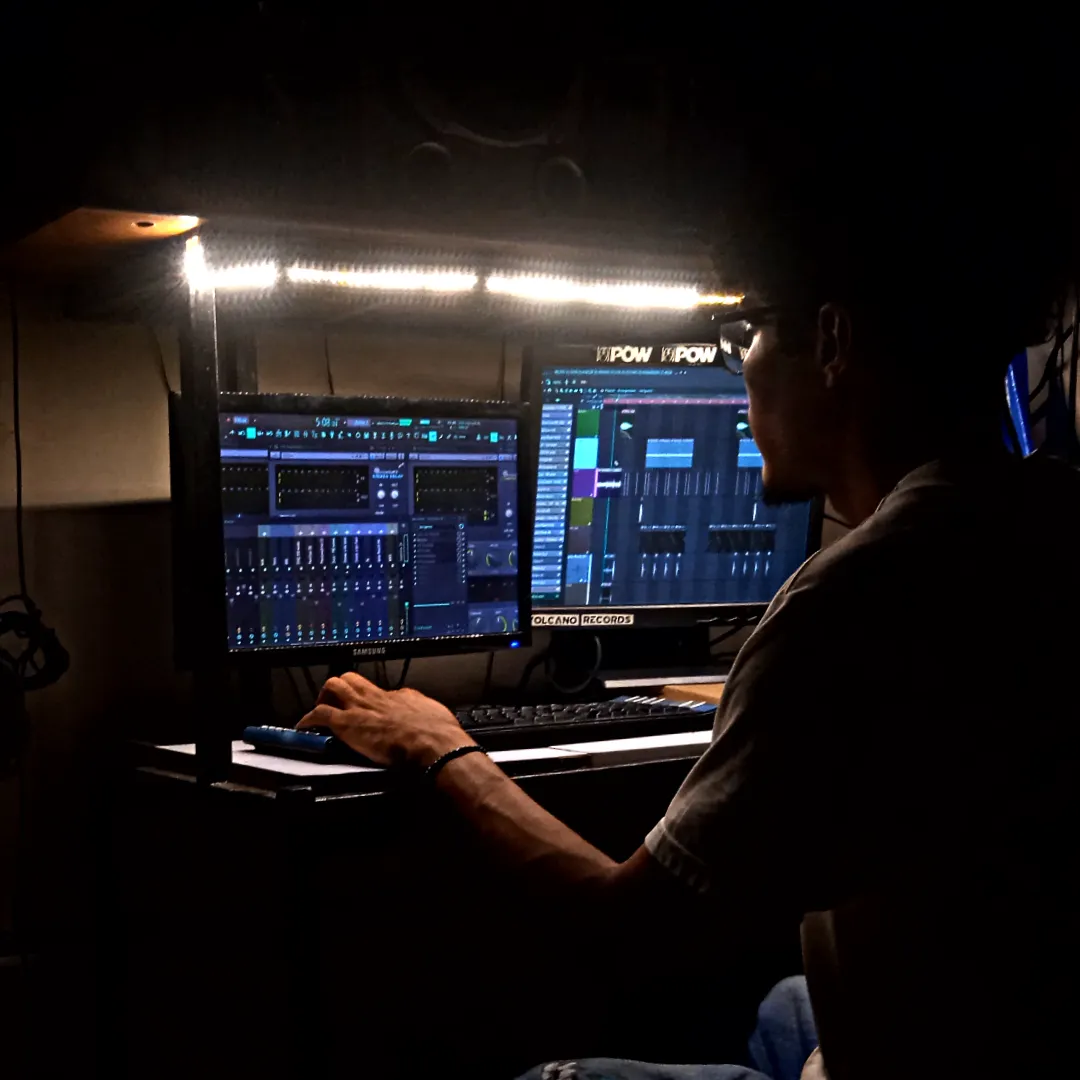
El primer paso es la composición del tema, ya sea instrumental o letra, hay muchas formas de enfocar el proceso de composición. Desde colaborar entre varios compositores, realizando primero la letra, luego la música o viceversa, hasta centrarnos solamente en la melodía vocal y letra, trabajando sobre una base instrumental (o beat) ya compuesta por un productor.
The first step is the composition of the song, whether instrumental or lyrics, there are many ways to approach the composition process. From collaborating among several composers, making the lyrics first, then the music or vice versa, to focusing only on the vocal melody and lyrics, working on an instrumental base (or beat) already composed by a producer.
En este punto mis compañeros de trabajos estaban escribiendo la letra de la canción
At this point my coworkers were writing the lyrics to the song.
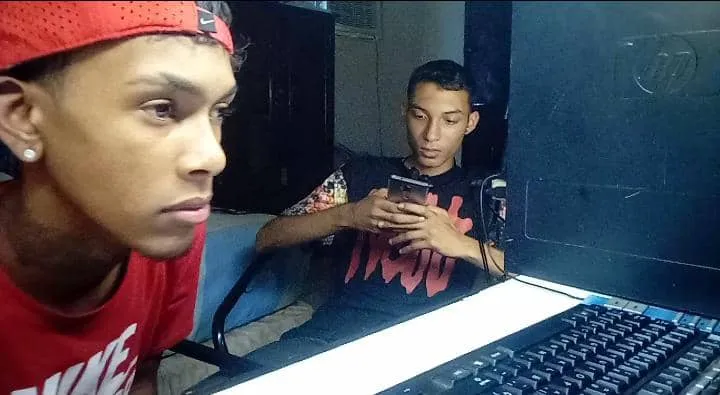
Segundo paso:preproducción musical, esta es la etapa de dejar fluir las ideas y grabar (maquetas, demo) para poder encontrar los siguientes puntos:
*Estructura o partes del tema
*Tempo (BPM)
*Tonalidad (y tesitura vocal)
*Dirección del estilo musical
Second step: musical pre-production, this is the stage of letting the ideas flow and recording (demos, demo) in order to find the following points:
*Structure or parts of the song
*Tempo (BPM)
*Tonality (and vocal tessitura)
*Direction of the musical style
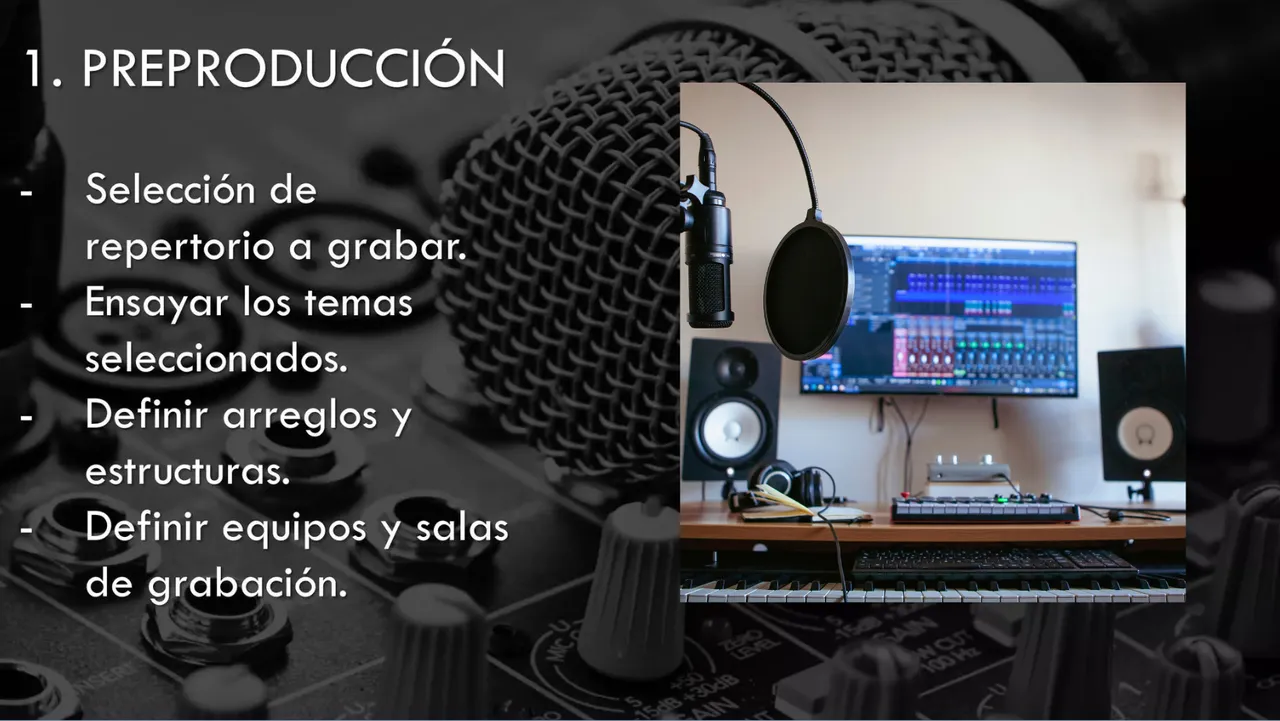

La tonalidad de la canción la elegí a partir de una pieza venezolana que me gusta mucho en G Mayor Sol Mayor
I chose the key of the song based on a Venezuelan piece that I like very much in G Major G Major
Cada uno de los puntos nombrados pueden ir modificándose a lo largo de las pruebas musicales, pero lo más conveniente sería definirlos lo más pronto posible, siempre con la ayuda del productor musical para evitar problemas futuros de tonalidad, tempo, o estructura cuando ya estén grabando. En la producción los instrumentos acústicos ya sea (batería, guitarra, trompeta, flauta) y estos tengas que volver a grabarlos.
Each of the points mentioned above can be modified during the musical tests, but it would be best to define them as soon as possible, always with the help of the music producer to avoid future problems of tonality, tempo, or structure when you are already recording. In the production the acoustic instruments either (drums, guitar, trumpet, flute) and these have to be re-recorded.
Naturalmente esto no es un problema en genérenos ´´populares´´ como él (reggaetón, hip hop, trap, incluso el género urbano), ya que estos ritmos son muy flexibles a nivel de cambios de estructura digitalmente.
Naturally this is not a problem in ''popular'' genres like it (reggaeton, hip hop, trap, even the urban genre), as these rhythms are very flexible in terms of changing their structure digitally.
Tercer paso:Instrumentación, arreglos musicales o creación del beat final.
Para este tercer paso, el proceso de instrumentación y de los arreglos musicales, dependiendo del género musical en el que se graban y crean cada uno de los sonidos que estarían en dicha producción, se puede realizar tras la composición y preproducción de la canción o anterior a la composición de la letra o melodía
De forma general, en estilos más basados en el pop, rock, indie, folk… se realizará primero la composición a un instrumento y voz, y luego el productor musical (si es arreglista) creará un arreglo musical. Algunas veces se secuencian instrumentos virtuales controlados por un teclado MIDI (baterías con sonidos reales, cuerdas) y luego se reemplazan por músicos de sesión. También se pueden ejecutar arreglos directamente en estudio formando una banda con músicos profesionales dirigidos por un arreglista o el mismo productor.
Third step: Instrumentation, musical arrangements or creation of the final beat.
For this third step, the process of instrumentation and musical arrangements, depending on the musical genre in which each of the sounds that would be in this production are recorded and created, can be done after the composition and pre-production of the song or prior to the composition of the lyrics or melody.
Generally, in styles more based on pop, rock, indie, folk... the composition will be made first to an instrument and voice, and then the music producer (if he is an arranger) will create a musical arrangement. Sometimes virtual instruments controlled by a MIDI keyboard are sequenced (drums with real sounds, strings) and then replaced by session musicians. Arrangements can also be performed directly in the studio by forming a band with professional musicians led by an arranger or the producer himself.
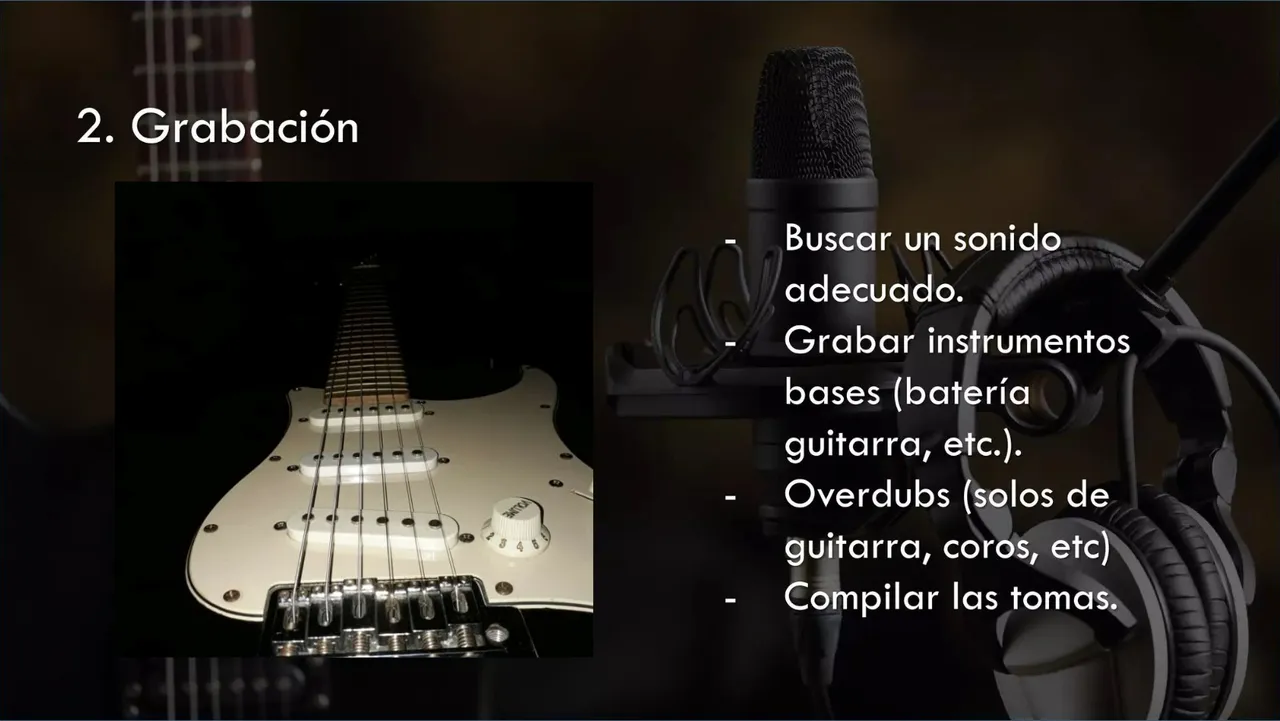
Cuarto paso:Previa a la grabación, cada uno de los músicos deben de calentar, afinar, y verificar que todo esté correcto en dichos instrumentos, una vez verificado lo dicho el productor deberá lograr que el sonido sea preciso y exacto, ya que así se podría ahorrar tiempo en la postproducción. Este paso suele ser el más largo, puesto que aunque ya tengamos clara la idea inicial, es posible que durante el proceso se nos ocurran nuevas ideas para mejorar cada parte del tema. Independientemente de si es un estudio doméstico o profesional, querer sacar la música muy apresurada y aplazar algunas horas de grabación puede ser perjudicial para la producción final.
Fourth step: Prior to the recording, each of the musicians must warm up, tune, and verify that everything is correct in those instruments, once verified the producer must ensure that the sound is precise and accurate, as this could save time in post-production. This step is usually the longest, because although we already have the initial idea clear, it is possible that during the process we come up with new ideas to improve each part of the song. Regardless of whether it is a home or professional studio, wanting to get the music out very quickly and postpone a few hours of recording can be detrimental to the final production.
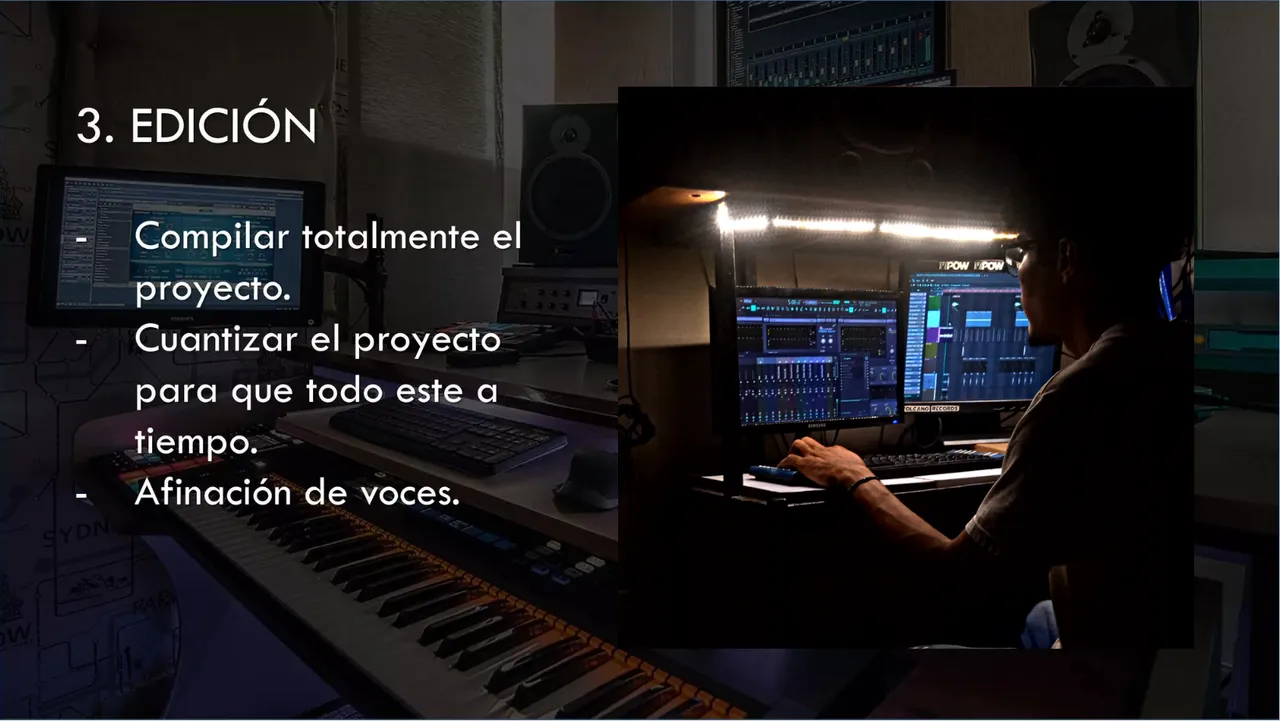
Quinto paso: 5. Mezcla de audio (Mix)
Cuando ya tenemos las instrumentales y la producción vocal finalizada (todas las grabaciones, instrumentos y voces grabadas)pasamos a la fase de mezcla de audio.
En esta fase el productor o ingeniero de mezcla se encargará de procesar las pistas individualmente, aplicando procesos de dinámica de compresores, ecualización y efectos de reverberación, retardos.
Los objetivos principales de esta parte de la mezcla son:
Equilibrar el sonido de cada uno de los instrumentos en cuanto volumen (decidir que elementos serán los principales y secundarios en cuanto a planos o decibeles)
Distribuir los elementos en el panorama estéreo (L y R)
Conseguir que apreciar cada uno de los elementos importantes (por ejemplo la letra) con facilidad, evitando enmascaramientos entre instrumentos.
Obtener el estilo sonoro que estamos buscando en la producción del tema (este punto se tiene que trabajar en todas las fases de la producción, por igual manteniendo el mismo criterio estilístico).
Añadir que la mezcla, en algunos casos, puede realizarse durante la creación del arreglo o ritmo. Sobre todo cuando la producción se basa en muestras y loops y el productor será el que ejecute la mezcla final. Incluso puede avanzarse la mezcla antes de la grabación de voz y llegada esta fase de la producción musical
Simplemente efectuando algunas correcciones.
Fifth step: 5. Audio Mixing (Mix)
When we have the instrumentals and the vocal production finished (all the recordings, instruments and voices recorded) we move on to the audio mixing phase.
In this phase the producer or mix engineer will be in charge of processing the tracks individually, applying compressor dynamics processes, equalization and reverb effects, delays.
The main objectives of this part of the mix are:
Balance the sound of each of the instruments in terms of volume (decide which elements will be the main and secondary in terms of planes or decibels).
To distribute the elements in the stereo panorama (L and R).
To get to appreciate each of the important elements (for example the lyrics) with ease, avoiding masking between instruments.
Obtain the sound style that we are looking for in the production of the song (this point has to be worked in all the phases of the production, equally maintaining the same stylistic criteria).
Add that the mixing, in some cases, can be done during the creation of the arrangement or rhythm. Especially when the production is based on samples and loops and the producer will be the one to perform the final mix. It is even possible to advance the mixing before the voice recording and at this stage of the musical production, simply by making some corrections.
Simply by making some corrections.
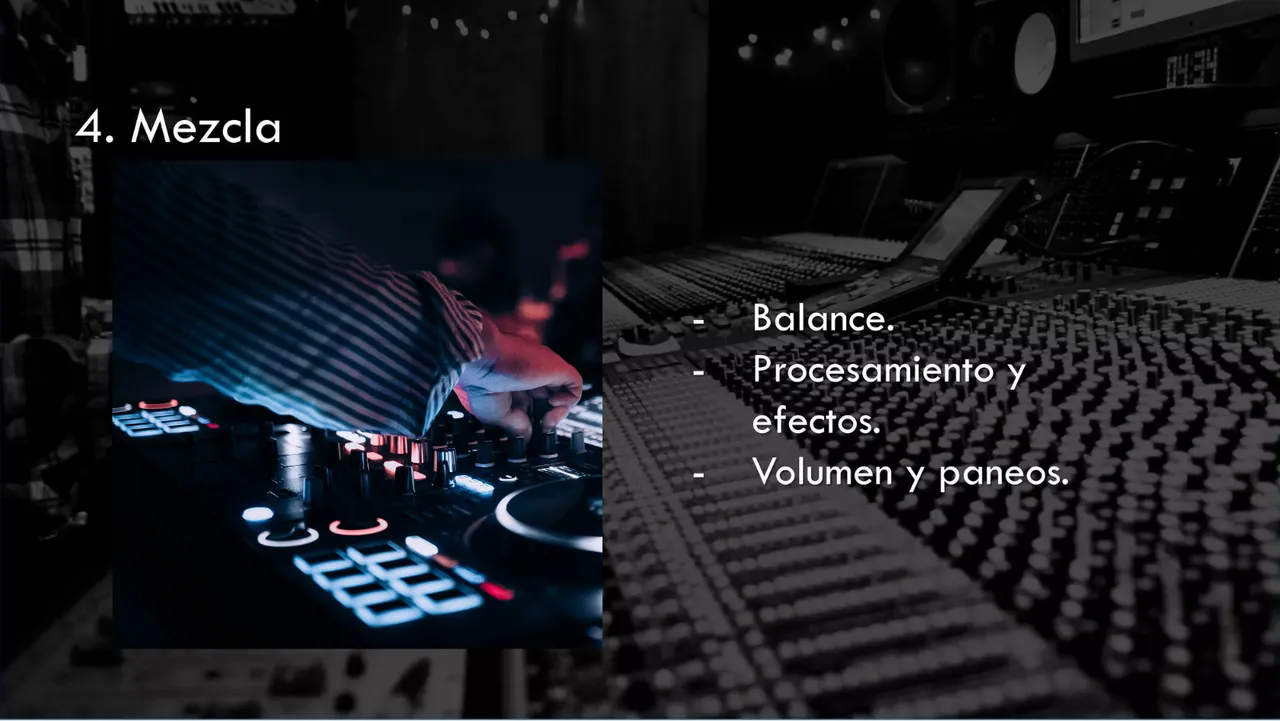
Sexto paso:Masterización (mastering)
Una vez tenemos la mezcla de audio equilibrada a nivel volumen, panorama y efectos, pasaremos a la fase de masterización o masterización del tema. En este aplicamos efectos de dinámica, ecualización, campo estéreo y maximización del volumen final en la pista ya mezclada.
Algunos aspectos importantes del mastering son:
volumen final del track (cuanto más volumen más potencia, pero menos dinámico entre partes y más compresión)
Curva de ecualización (decisión de nivel de graves, medios y agudos) del tema producido para que se escuche equilibrado tanto en monitores de estudio como en dispositivos portátiles o hifi.
Compensación y coherencia (a nivel volumen y ecualización) entre varios temas que formarán parte de un mismo trabajo discográfico (EP, álbum).
Niveles óptimos para el formato al que irá destinado el master (digital, televisión, CD, vinilo…)
Sixth step:Mastering
Once we have the audio mix balanced in terms of volume, panorama and effects, we will move on to the mastering phase or mastering of the track. In this phase we apply dynamic effects, equalization, stereo field and maximization of the final volume in the already mixed track.
Some important aspects of mastering are:
final volume of the track (the more volume the more power, but less dynamic between parts and more compression).
Equalization curve (decision of bass, mid and treble level) of the produced track so that it sounds balanced both in studio monitors and in portable or hifi devices.
Compensation and coherence (volume and equalization) between several tracks that will be part of the same record (EP, album).
Optimal levels for the format to which the master will be destined (digital, television, CD, vinyl...).
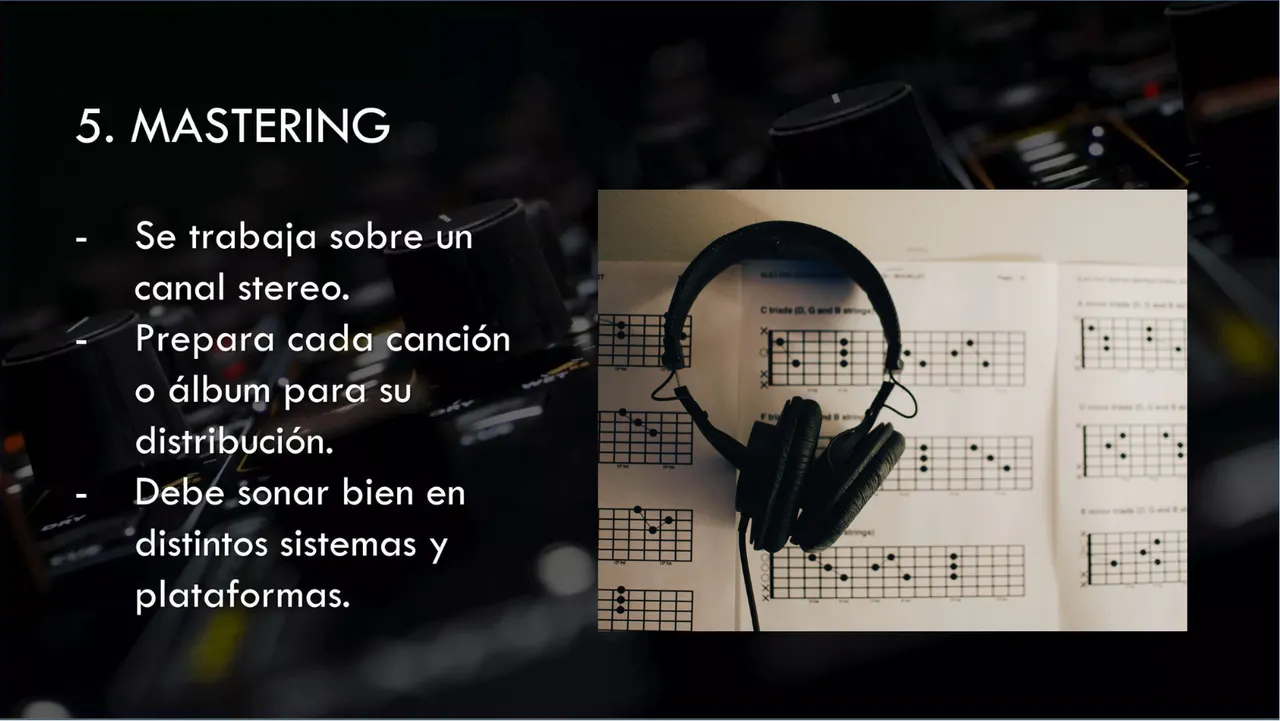
Lo siguiente no es de producción musical, pero te servirá esta información:
¿Qué es el Marketing Musical?
El marketing musical consiste en promocionar y publicitar música y productos derivados, como descargas y streams digitales, productos físicos, conciertos y mucho más. A menudo hay un gran solapamiento con el marketing digital, ya que el negocio de la música se ha apropiado más de la esfera digital. El marketing musical también implica desarrollar relaciones con profesionales de la industria musical y personas influyentes.
Puntos claves
¿Cómo atraer oyentes a la música?
Cómo puedo atraer a más gente a mi música
como crear contenidos visuales impactantes para promocionar tu música
Publicar «covers» en las redes sociales y en YouTube
Pide el apoyo de tus amistades ya sea con un like y una compartida
usa las plataformas a tu favor para promocionar tu música ya sea #Spotify, #Youtube, #Hive, #3Speak
Gracias por pasar por este post, espero volver a vernos más adelante, espero les sirva esta información
The following is not about music production, but you will find this information useful:
What is Music Marketing?
Music marketing is all about promoting and advertising music and derivative products, such as digital downloads and streams, physical products, concerts and more. There is often a lot of overlap with digital marketing, as the music business has become more appropriated into the digital sphere. Music marketing also involves developing relationships with music industry professionals and influencers.
Key points
How do I attract listeners to music?
How can I attract more people to my music?
how to create powerful visual content to promote your music
Posting covers on social media and YouTube
Ask for support from your friends by liking and sharing your music
use the platforms to your advantage to promote your music whether it's #Spotify, #Youtube, #Hive, #3Speak
Thanks for stopping by this post, I hope to see you later, I hope you find this information useful.